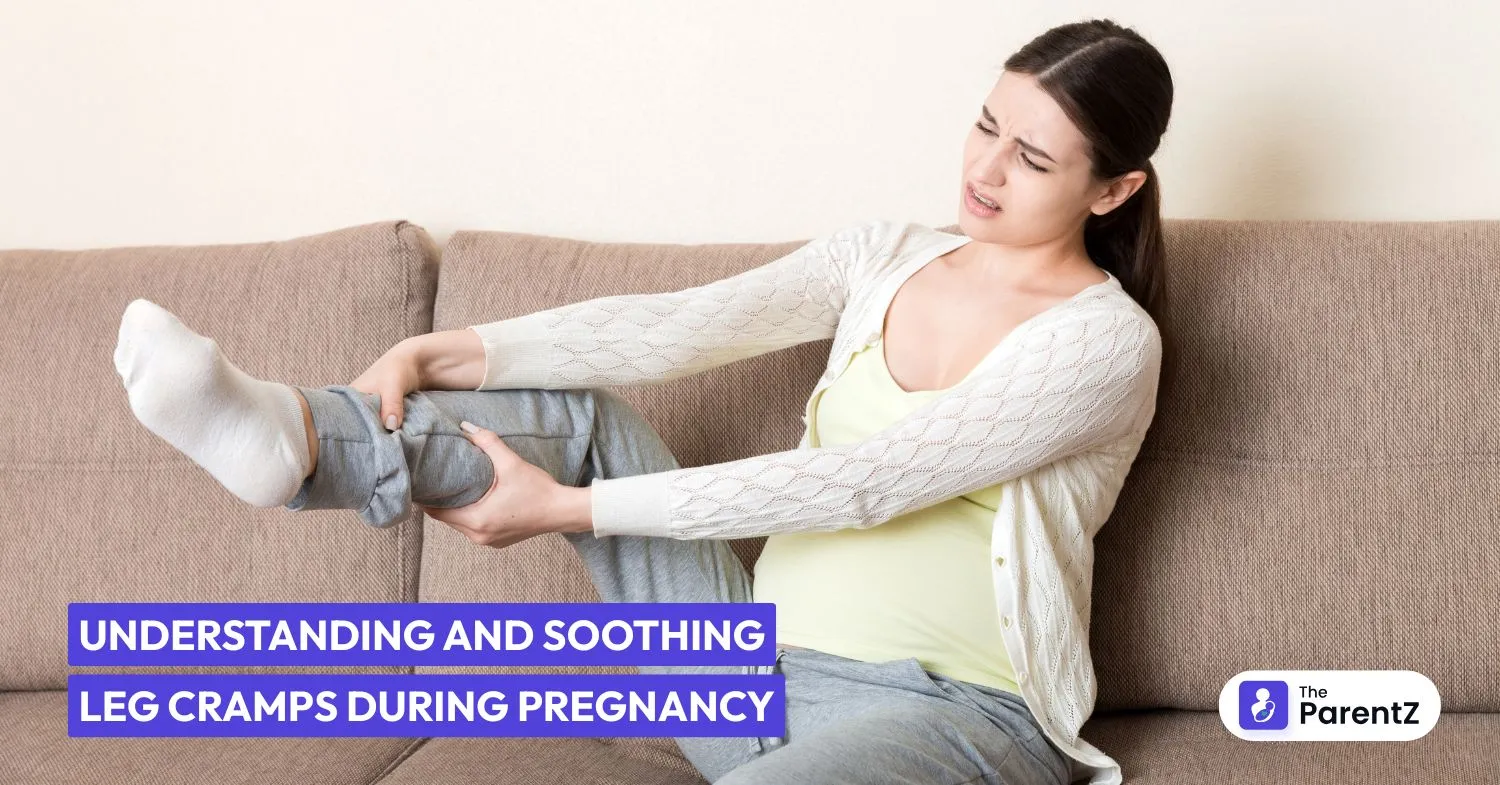It’s the middle of the night. You’re finally asleep after tossing and turning to find a comfortable position when suddenly, a sharp, involuntary spasm in your calf jolts you awake. Sound familiar?
Leg cramps, especially in the calves, are a surprisingly common complaint during pregnancy, often peaking in the second and third trimesters. They can strike at night or during the day, disrupting sleep, comfort, and sometimes even confidence in your body’s ability to keep up with the demands of pregnancy.
While leg cramps can be painful and frustrating, they’re usually harmless. Still, understanding why they happen and what you can do to soothe or prevent them can make a big difference in your comfort.
What Are Leg Cramps?
Leg cramps are sudden, involuntary contractions of muscles, most often in the calf, foot, or thigh. These cramps may last just a few seconds or up to a couple of minutes and can leave soreness even after they pass.
During pregnancy, they’re most common at night and tend to affect the calves. They may start as early as the second trimester and become more frequent as your pregnancy progresses.
How Common Are They?
According to studies, up to 50–75% of pregnant people experience leg cramps, particularly in the third trimester. While they’re considered a “normal” part of pregnancy, they can still be painful and disruptive.
Why Do Leg Cramps Happen During Pregnancy?
There’s no single, definitive cause, but several factors likely contribute:
1. Circulatory Changes
In pregnancy, your blood volume increases, and your circulatory system adapts to support the growing uterus and placenta. This added pressure can reduce efficient blood flow to the legs and feet, especially when lying down.
2. Increased Pressure on Nerves and Blood Vessels
As your uterus grows, it can press on nerves and blood vessels in the pelvis and legs. This may affect nerve signals and circulation, increasing the chance of cramping.
3. Electrolyte Imbalances
Fluctuations or deficiencies in magnesium, calcium, or potassium may play a role. These minerals are essential for normal muscle function and nerve signaling.
4. Dehydration
Pregnant people need more fluids, and even mild dehydration can trigger muscle cramps. Warm weather, exercise, or low fluid intake may increase the risk.
5. Fatigue and Muscle Overuse
Carrying extra weight and maintaining posture with a shifting center of gravity puts strain on your legs. Muscles that are tired or tight may cramp more easily, especially at night when blood flow slows.
When Do They Usually Occur?
Leg cramps can strike at any time, but many people notice them:
- At night, especially when stretching or moving in bed
- After exercise or long periods of standing
- Toward the end of the day, when legs are more fatigued
Night cramps, in particular, are called nocturnal leg cramps, and they’re a common sleep disruptor during pregnancy.
How to Relieve a Leg Cramp When It Happens
When a cramp strikes, the pain is immediate—but relief can come quickly with the right moves:
1. Stretch It Out
- Immediately straighten your leg and flex your foot upward (toes toward your head).
- This stretches the calf muscle and can help stop the cramp.
2. Massage and Apply Heat
- Gently massage the muscle with firm pressure.
- Use a warm towel or heating pad to relax tight muscles.
3. Walk It Off
- If possible, stand and walk gently to improve circulation and release the muscle contraction.
4. Apply Cold (Afterward)
- If there’s lingering soreness, a cold pack may reduce inflammation or tenderness.
Preventing Leg Cramps: What Actually Helps?
While there’s no guaranteed way to avoid all leg cramps, several strategies may reduce their frequency and severity.
1. Stay Hydrated
- Drink plenty of water throughout the day, even if you’re already visiting the bathroom often.
- Proper hydration helps muscles function well and supports blood flow.
2. Stretch Regularly
- Perform gentle calf stretches before bed.
3. Supportive Footwear
- Avoid flat or unsupportive shoes, especially if you’re standing a lot.
- Orthotic inserts or compression socks may improve circulation.
4. Magnesium and Calcium Intake
- Some studies suggest that magnesium or calcium supplements may reduce cramping.
- Always check with your provider before adding any supplements. Magnesium-rich foods include:
- Calcium-rich foods include:
5. Elevate Your Legs
- Elevate legs during rest periods to help with circulation and swelling.
- Sleeping with a pillow under your calves or knees may help.
6. Avoid Prolonged Standing or Sitting
- If your day involves sitting for long periods, stand up and stretch frequently.
- If you’re on your feet all day, take breaks to rest and raise your legs.
When to Talk to Your Provider
While leg cramps are usually harmless, sometimes they can be mistaken for more serious conditions—like a blood clot (deep vein thrombosis or DVT).
Seek medical attention if you experience:
- Persistent leg pain or swelling in one leg
- Redness, warmth, or tenderness along a vein
- Pain that doesn’t improve or worsens with movement
Also, speak to your provider if:
- Cramps are becoming unusually frequent or severe
- You want to explore safe supplement options
- You’re concerned about circulation or nutrition
What Doesn’t Work?
There’s a lot of anecdotal advice floating around, but not all of it is evidence-based. A few things to keep in mind:
- Tonic water (quinine) is not recommended during pregnancy and may cause side effects.
- Vitamin E supplements have not shown consistent benefit and are not routinely advised.
- Stretching is more reliable than massage alone in preventing night cramps.
Conclusion: Comfort Through Understanding
Pregnancy is filled with incredible changes and a few frustrating symptoms. Leg cramps may seem like a small inconvenience, but when they start disrupting your sleep or causing pain, they can take a real toll.
The good news? These cramps are usually temporary and manageable. Through hydration, movement, stretching, and smart nutritional support, most pregnant people can find real relief.
And remember: you’re not alone. These cramps may be common, but so is the care and support available to help you through them.
A few proactive steps plus some grace for your hardworking body can go a long way toward making your pregnancy journey more comfortable, one leg at a time.









Be the first one to comment on this story.